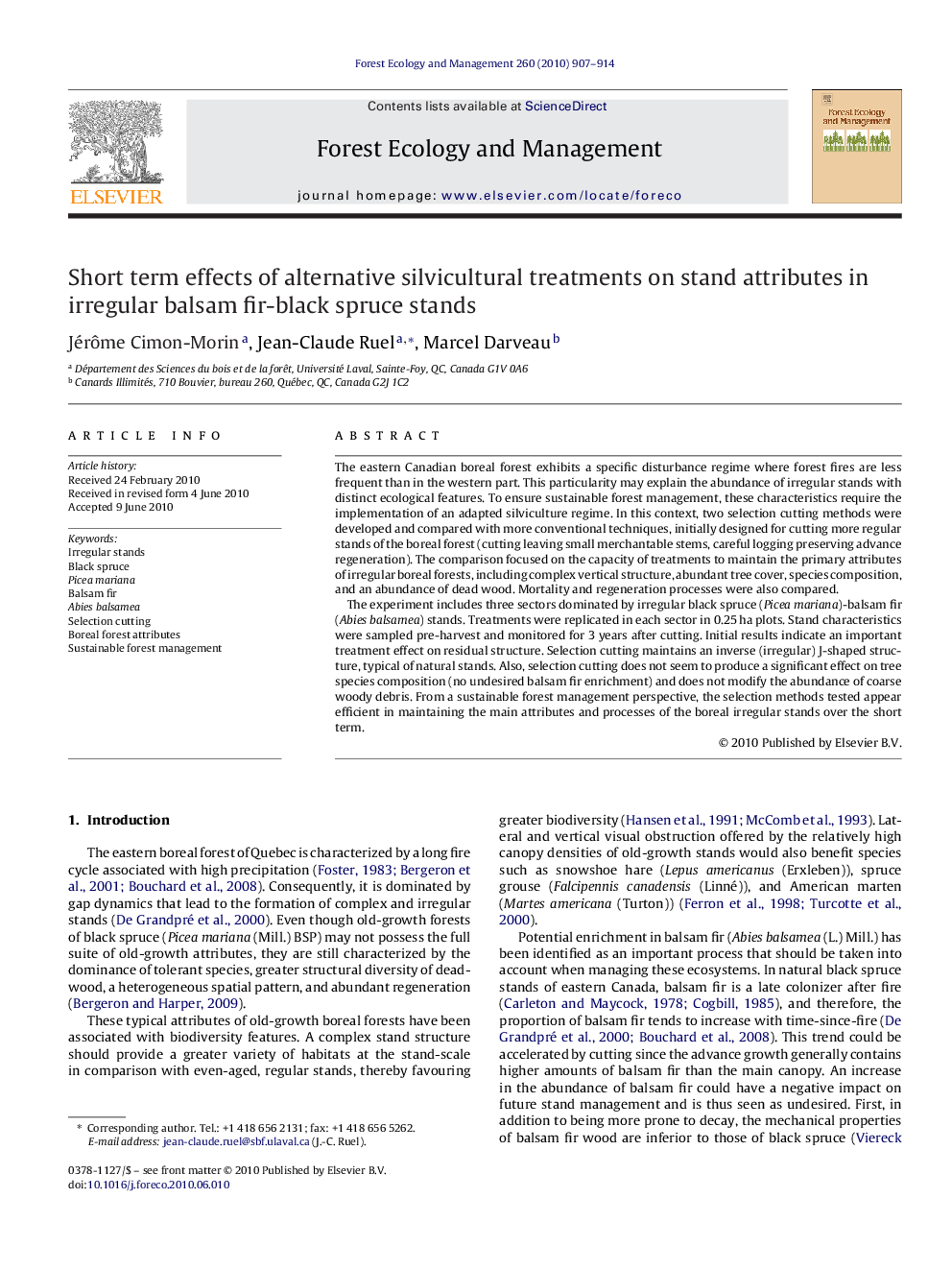| Article ID | Journal | Published Year | Pages | File Type |
|---|---|---|---|---|
| 88415 | Forest Ecology and Management | 2010 | 8 Pages |
The eastern Canadian boreal forest exhibits a specific disturbance regime where forest fires are less frequent than in the western part. This particularity may explain the abundance of irregular stands with distinct ecological features. To ensure sustainable forest management, these characteristics require the implementation of an adapted silviculture regime. In this context, two selection cutting methods were developed and compared with more conventional techniques, initially designed for cutting more regular stands of the boreal forest (cutting leaving small merchantable stems, careful logging preserving advance regeneration). The comparison focused on the capacity of treatments to maintain the primary attributes of irregular boreal forests, including complex vertical structure, abundant tree cover, species composition, and an abundance of dead wood. Mortality and regeneration processes were also compared.The experiment includes three sectors dominated by irregular black spruce (Picea mariana)-balsam fir (Abies balsamea) stands. Treatments were replicated in each sector in 0.25 ha plots. Stand characteristics were sampled pre-harvest and monitored for 3 years after cutting. Initial results indicate an important treatment effect on residual structure. Selection cutting maintains an inverse (irregular) J-shaped structure, typical of natural stands. Also, selection cutting does not seem to produce a significant effect on tree species composition (no undesired balsam fir enrichment) and does not modify the abundance of coarse woody debris. From a sustainable forest management perspective, the selection methods tested appear efficient in maintaining the main attributes and processes of the boreal irregular stands over the short term.
Research highlights▶ The experiment compared two patterns of selection cutting with conventional cutting methods and an uncut control. ▶ Selection cutting, in contrast with other methods, maintained a complex stand structure. ▶ Selection cutting did not modify species composition or the abundance of coarse woody debris. ▶From a sustainable forest management perspective, the selection methods tested appear efficient in maintaining the main attributes and processes of the boreal irregular stands over the short term.
